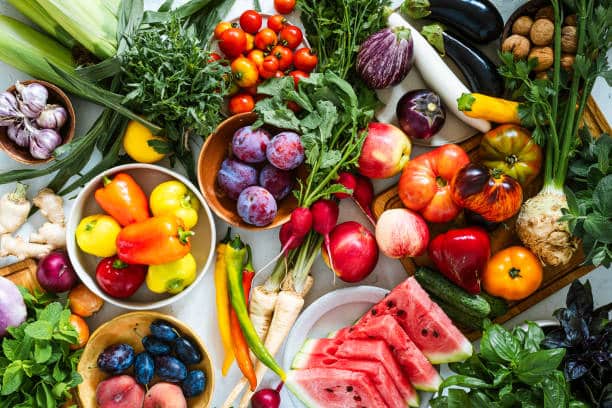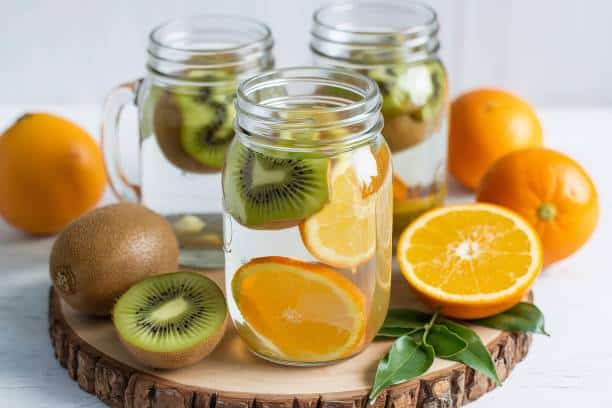
‘Natural’ has become a bit of a buzzword over the years, catching consumers’ eyes and leading to feelings of health and wellness.
But what if there’s a dark truth behind this term that few people are telling?
As it turns out, all those ‘natural flavors’ found on food labels and in items you love – well, they may not be that natural after all. Even worse, they may actually be quite harmful to your health…
While this term on a bottle or package sounds wholesome, evoking images of fresh fruits or herbs, the reality is far less nutritious.
You deserve to know the truth (and the science) behind this. In this article, we’ll dissect all the dirty little secrets of so-called natural flavors and what you can do to find truly healthy, natural alternatives.
What Are ‘Natural Flavors’?
The U.S. Food and Drug Administration (FDA) defines “natural flavors” as substances derived from natural sources. That means everything from fruits to vegetables, spices, or herbs, all extracted through processes like distillation, fermentation, or heating.
Unlike artificial flavors, which are entirely synthetic, these natural flavors do, in fact, start with a natural base. But that’s where it all goes astray. From that once nutritious, delicious natural origin, these ‘flavors’ take on a questionable journey.
According to one report from the Environmental Working Group (EWG), natural flavors can include over 100 different chemicals, including solvents, preservatives, and emulsifiers. In other words, these final products are a far cry from their whole food origin.
For example, a “natural strawberry flavor” might begin with strawberries, but quickly becomes something different. It may undergo extraction using solvents like hexane, a petroleum-derived chemical. Such a process is known to strip away beneficial nutrients like antioxidants (e.g., vitamin C or flavonoids), leaving behind little to no nutritional value.
Some manufacturers even add carriers like propylene glycol or preservatives to extend shelf life, which can be dangerous over time to human health.
Because companies aren’t required to disclose the specific chemicals in natural flavors, this lack of transparency makes it harder to make informed choices.
RELATED: 12 Herbal Teas That Naturally Stop Headaches

Why “Natural Flavors” Aren’t as Healthy as They Seem
We’ve already covered some of the issues with so-called natural flavors, but let’s go deeper. After all, as a health-conscious consumer, you should have every right to know what you’re putting in your body.
As mentioned, natural flavors are far different from whole foods and lack many of the vitamins, minerals, and phytonutrients that support health. While whole oranges provide fiber, vitamin C, and folate, crucial for reducing inflammation and heart disease risk, orange-flavored drinks typically do not.
Then you’ve got hidden additives. Unfortunately, natural flavors often include additives like monosodium glutamate (MSG) or artificial sweeteners to enhance taste. More than a few studies have raised concerns about MSGs, noting their ability to trigger headaches and even allergic reactions in sensitive individuals.
You should also consider the risk of overconsumption. Because these natural flavors are so enhanced to increase taste and desirability, they are often consumed in excess. This can lead to obesity, diabetes, and plenty of other metabolic disorders. Some research has even linked ultra-processed foods to a 30 percent higher risk of type 2 diabetes, a critical issue among the Black community.
And finally, you’ve got the impacts beyond the human body. We’re talking about both environmental and ethical concerns. As it turns out, the extraction process for these not-so-natural flavors often involves harmful chemicals, sometimes sourced from exploited agricultural communities where labor laws are weak or nonexistent.
Not good!
RELATED: Wait—Water Infusions Can Target Specific Health Issues?

So Here’s What You Can Do Today
Now that we’ve got all the bad news out of the way, let’s discuss some simple, everyday steps you can employ right away to get actual natural flavors into your diet.
First off, read labels critically. Look at the ingredients and scan for whole foods. Think “apples,” not “natural apple flavor.” Brands like Eden Foods are noted for their transparency and whole ingredients, so if you can find them at your local grocer or online, they’re definitely worth the money.
You can also use apps like Yuka and Think Dirty to scan labels and identify any hidden ‘baddies’ that may harm your health. You’ll learn about potential impacts such as carcinogenicity and allergies, and even see ratings for quality and low-quality food items.
Next, learn how to cook! Preparing meals with whole foods doesn’t have to be a hassle. You can use fresh or minimally processed ingredients, such as rosemary, thyme, basil, ginger, turmeric, and cayenne. These herbs and spices provide a truly natural flavor that is also rich in nutrients. They’ll go quite well with dishes containing collard greens, jollof rice, and plantains in particular.
If you’re free on weekends, definitely consider batch cooking so that you can refrigerate or freeze large quantities of food for the week ahead. Vegetable stews are a great option and will keep you from running out to the grocery store for an unhealthy packaged meal during the week.
And don’t forget beverages as well. Whole food beverages are drinks that are actually naturally flavored. These include fruit infusion recipes, such as water with lemon, berries, oranges, and even some of the herbs and spices already mentioned. Herbal teas are also a top choice, so long as you buy organic. Hibiscus tea – a West African staple rich in vitamin C and antioxidants – is certainly one you have to try!
Last but not least, shop locally when you can. As the seasons shift, it’s important to adopt different fresh produce into your meals. Not only will you enjoy increased nutrition, but you can also connect to your cultural roots, such as through farms supported by the National Black Food and Justice Alliance.
At the end of the day, it’s all about being a smart consumer and conscientious eater. While it may sound like a lot of work at first, once you know what to look for on those ingredient labels, it’s pretty easy.
And if you’re worried about the increased cost of healthy alternatives, consider farmer’s markets, wholesale clubs, food cooperatives, and stores like Aldi and Trader Joe’s.
Online retailers such as Thrive Market, Boxed, and Vitacost also specialize in organic and whole foods, even providing bulk options if you want to really get some bang for your buck.
So have fun. Getting healthier and happier is all about the journey. This is your personal wellness path, so don’t worry about what others are doing. Stay your course, take pride in your decision-making, and become the best version of yourself possible.
You definitely deserve it!








